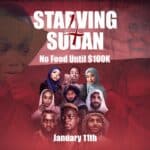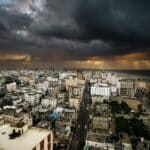Livelihood Support for Vulnerable People: 2025 Vitality
Why Livelihood Support for Vulnerable People Matters More Than Ever
Livelihood support for vulnerable people is the foundation that transforms lives from survival to self-sufficiency. It’s more than just providing immediate aid – it’s about building sustainable pathways out of poverty for those who need it most.
What is livelihood support?
- Skills training and vocational education to help people earn income
- Financial services like microfinance, savings groups, and cash assistance
- Market access and business development support
- Asset building including tools, equipment, and productive resources
- Social protection systems that provide safety nets during crises
The numbers tell a sobering story. Approximately 820 million people worldwide cope with chronic hunger, enduring days, months, and years of being undernourished. More than half of these people are smallholder farming families struggling with irregular income from agriculture, livestock, and fishing.
The challenges are immense. Food insecurity peaks in the most fragile environments – places hit by disasters, climate change, and conflict. In Africa alone, two-thirds of people live on degraded land, while globally, a quarter of all agricultural land has been damaged.
But there’s hope in proven solutions. Leading organizations and local partners are showing that when vulnerable people receive the right support – from cash transfers that help women like Salma start vegetable stalls, to training programs that enable refugees to rebuild their lives – change happens.
As Caroline Evashavik, I’ve witnessed through my work at UMR how strategic livelihood support for vulnerable people creates ripple effects that strengthen entire communities. Our experience shows that transparent, results-driven programs generate the most sustainable impact.

The Uphill Battle: Why Vulnerable Populations Struggle to Secure Livelihoods

For millions, each day begins with the uncertainty of whether there will be enough food. Their crops may have failed due to drought, and the land that once sustained their families is now barren. This is the daily reality for those who desperately need livelihood support for vulnerable people.
The challenges they face are a tangled web where each problem worsens the others. Food insecurity affects approximately 820 million people worldwide, with families enduring months and years of undernourishment.
More than half of these struggling families are smallholder farmers whose income is at the mercy of weather and crop prices. When climate change brings unexpected floods or droughts, entire communities can lose everything. We’ve witnessed this in regions like Kenya, which is why our Food Relief for the Flood-Affected People in Kenya program is so vital.
Conflict, displacement, social exclusion, gender inequality, and disability barriers create additional, seemingly impossible problems.
The Crippling Effect of Environmental Degradation
The earth beneath many families’ feet is literally disappearing. Land degradation affects two-thirds of people in Africa, while globally, a quarter of all farmable land has been damaged. When the soil can’t grow food, families face impossible choices.
Water scarcity forces women and girls to walk hours for clean water, time that could be spent in school or earning an income. Deforestation and the loss of biodiversity strip away natural resources for food and medicine. In desperation, families may resort to “negative coping strategies” like cutting down more trees to sell as charcoal, worsening the environmental damage and trapping them in a downward spiral.
Climate change acts as an accelerant, making droughts longer and floods more devastating. A farmer who once knew when to plant now faces unpredictable seasons. Our East Africa Emergency Appeal addresses these climate-driven crises.
Systemic Barriers and Social Exclusion
Beyond environmental challenges, invisible walls block vulnerable people from building better lives. Lack of legal rights, limited access to education, and poor health trap them in low-paying work and drain family savings.
For refugees and displaced persons, the challenges multiply. While international law upholds a refugee’s right to work, the reality can be crushing. In 2023, 55% of refugees lived in countries where they couldn’t legally get jobs. Imagine being a skilled teacher or mechanic, only to find your qualifications mean nothing. This forces families to depend on aid, robbing them of dignity. Our work on the Importance of Education for Refugee Children helps break this cycle.
Persons with disabilities face double the poverty rates. Stigma and discrimination make finding work nearly impossible, even when they have valuable skills. While progress is happening, with 87,000 people with disabilities receiving training and job support in 2023, there’s still much work to do.
The cycle of poverty isn’t just about money; it’s about the basic human right to build a better future.
Building Blocks of Hope: Core Components of Effective Livelihood Support

Effective livelihood support for vulnerable people isn’t about quick fixes. It’s an integrated system that puts communities at the center to create lasting change. At UMR, we focus on community participation and building long-term resilience to help people bounce back from shocks like droughts or floods.
Our work centers on three key areas:
- Financial inclusion that puts economic power in people’s hands
- Skills development that opens doors to new opportunities
- Climate-smart strategies that build sustainable futures
Financial Inclusion and Social Protection
Access to financial services can be life-changing. For families outside the formal banking system, Village Savings and Loan Associations (VSLAs) are a powerful tool. In these groups, members pool their savings and lend to one another, supporting small businesses and building capital together. In 2023, over 34,932 people accessed financial services through these grassroots groups.
Cash and Voucher Assistance (CVA) is a dignified and effective way to help during crises. It empowers people to buy what they need most. Take Zareena, a 70-year-old widow who used $120 to start her own grocery shop, or Salma, who used the same amount to set up a thriving vegetable stall. These stories show that when you trust people with resources, incredible things happen. Microfinance and access to credit provide similar tools for investment, as seen in our Income Generating Farming Jordan projects.
Skills Development and Market Access
Sustainable change comes from connecting skills to real opportunities. Vocational training and entrepreneurship support form the backbone of this approach. In 2023, our programs helped 17,748 people find employment. We focus not just on technical abilities but also on crucial business skills like marketing and accounting.
Value chain development helps producers understand and meet market demands. We also support people in finding good market locations, because sometimes success is as simple as being in the right spot. Our ESL Classes for Refugees and Immigrants show how foundational education opens doors to economic opportunities.
Climate-Smart and Green Livelihood Strategies
With climate change already here, climate-smart agriculture and green livelihood strategies are essential. Practices like improved poultry production, potato cultivation, and beekeeping don’t just increase income—they build resilience to changing weather patterns.
Water harvesting, soil conservation, and reforestation restore the land for future generations. Renewable energy projects, like solar panels or biogas systems, can reduce costs, improve health, and create new income streams. By diversifying income and restoring ecosystems, communities can weather storms that would otherwise be devastating. Our climate-smart and green livelihoods initiatives show how environmental protection and economic development can work hand in hand.
Custom Strategies for Livelihood Support for Vulnerable People
One size does not fit all in livelihood support for vulnerable people. A refugee family, a person with a disability, and a farming community hit by floods all face unique challenges. At UMR, our approach is built on listening to communities and designing context-specific and inclusive programs that address their specific realities.
Ensuring Economic Inclusion for Refugees and Displaced Persons
For millions of refugees, economic inclusion is crucial for recovery. While the proportion of refugees in countries with access to formal employment rose to 45% in 2023, millions still face legal barriers preventing them from working. Our work focuses on breaking down these barriers by advocating for the right to work and supporting entrepreneurship.
We use approaches like the Graduation Approach, which combines social protection with skills training and financial inclusion to help the most vulnerable refugees move toward self-reliance. By working with governments, businesses, and local groups, we help refugees access bank accounts, learn marketable skills, and join local value chains. This transforms them from aid recipients to active contributors, as seen in our work described in How to Help Sudan Refugees.
Breaking Barriers: Livelihood Support for Vulnerable People with Disabilities
People with disabilities are twice as likely to live in poverty, facing physical barriers and social stigma. But when these barriers are removed, inclusion breaks the cycle of poverty and disability, benefiting everyone. Our approach centers on Community-Based Inclusive Development, creating opportunities that work for all.
This means ensuring our vocational training is accessible, providing adaptive tools, and fighting discrimination. By making programs like our Village Savings and Loan Associations inclusive, people with disabilities can access financial services to start businesses and build economic independence. In 2023 alone, 87,000 people with disabilities gained access to training, jobs, or financial services through such projects.
Responding in Times of Crisis
Disasters hit the most vulnerable communities hardest, destroying livelihoods overnight. Our crisis response must be swift and forward-thinking. Emergency cash transfers are a powerful tool, putting money directly into people’s hands and trusting them to know what they need most, whether it’s food, rent, or support for a small business.
We also link immediate relief to long-term recovery. Our Food Assistance for Assets programs provide aid while communities work on projects that benefit everyone, like rebuilding roads or repairing irrigation systems. Every crisis, from the COVID-19 pandemic to the massive floods in Pakistan, teaches us new lessons about protecting livelihoods, as detailed in our response to Pakistan Flood: Crushed over 30 Million People. The goal is always to help people survive the crisis and rebuild stronger.
Measuring What Matters: How Success in Livelihood Support is Defined
When it comes to livelihood support for vulnerable people, good intentions aren’t enough. At UMR, we believe in measuring what truly matters: the real, lasting changes in people’s lives. It’s not just about counting people reached, but understanding if families are genuinely better off long after our programs end.
The clearest signs of success are increased household income and asset accumulation. Are families earning more? Can they afford to buy a goat, invest in better tools, or start a business? These tangible improvements show a move from surviving to building a secure future.
Food security improvements are equally important. We track whether communities experience fewer days of hunger and if families can afford nutritious meals year-round. When a mother no longer has to choose between feeding her children and paying for medicine, that’s real progress.
We also measure resilience metrics—how well households can weather life’s storms. Building this capacity is what separates temporary relief from lasting change. The graduation approach, which aims to help chronically food-insecure households “graduate” from safety net programs, is particularly meaningful. When a family can stand on its own, that’s a milestone worth celebrating.
We pay special attention to women’s empowerment because the ripple effects are extraordinary. When women gain economic independence, they invest more in their children’s education and health, strengthening entire communities. This commitment to evidence-based improvement ensures every dollar invested creates meaningful change, as seen in projects like our work in A Journey of Compassion: Changing Lives in Wajir County, Kenya.
Frequently Asked Questions about Livelihood Support
What is the difference between short-term humanitarian aid and long-term livelihood support?
Think of humanitarian aid as the emergency room. It provides immediate, life-saving assistance like food, water, and shelter during a crisis. Livelihood support for vulnerable people is the long-term recovery plan. It focuses on building skills, assets, and opportunities so people can become self-sufficient and resilient to future shocks. Humanitarian aid saves lives today; livelihood support transforms lives for tomorrow.
Why is community participation so important for success?
The best solutions come from the people facing the challenges. When communities help design and lead livelihood support programs, the solutions fit the local context, culture, and needs. More importantly, participation fosters ownership, ensuring that positive changes are sustained long after our direct support ends. It empowers people to drive their own development.
How does supporting women’s livelihoods benefit the entire community?
Supporting women’s livelihoods creates a powerful “multiplier effect.” When women earn an income, they tend to reinvest the vast majority of it back into their families—on things like their children’s nutrition, health, and education. This improves well-being for the whole family and helps break the cycle of poverty for the next generation. Empowering women economically is one of the most effective ways to strengthen entire communities.
Conclusion: A Path Towards Self-Reliance and Dignity
The journey through livelihood support for vulnerable people reveals a powerful truth: investing in people’s ability to support themselves transforms entire communities. Stories like those of Salma and Zareena, who turned small cash transfers into thriving businesses, prove that the right support at the right time open ups incredible human potential.
We’ve seen that while challenges like climate change, systemic barriers, and conflict are complex, effective solutions exist. The best strategies combine financial inclusion, skills development, and climate-smart approaches, all centered on community participation.
What makes this work transformative is its focus on moving beyond traditional aid. Instead of creating dependency, it builds self-reliance. Instead of temporary fixes, it creates lasting change that families can pass down to their children. At UMR, we know that empowerment beats dependency every time.
This is about dignity as much as economics. When someone can provide for their family, plan for the future, and contribute to their community, real change happens. Our commitment at UMR is to foster transparent, sustainable partnerships that respect the wisdom of the communities we serve. We measure success not in dollars distributed, but in lives transformed and communities empowered.
We invite you to be part of this work. You can help vulnerable people everywhere find their own path to dignity and self-sufficiency.
Explore our Livelihood Programs and join us in building a world where everyone has the opportunity to thrive.








